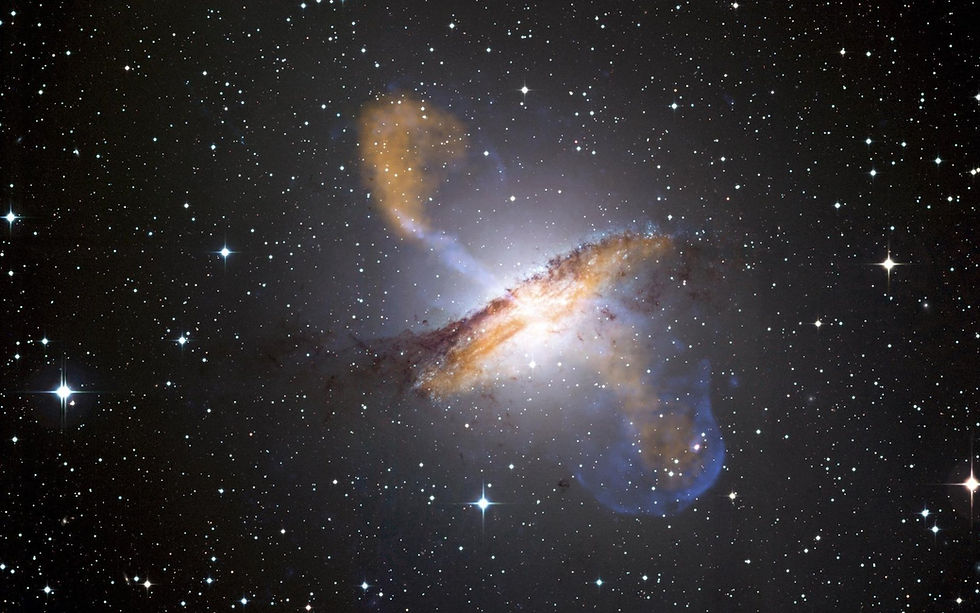The Future of Space Exploration: Private Companies and Beyond.
- The Moolah Team
- Jul 11, 2023
- 13 min read
This blog post will examine the changing landscape of space exploration, as private companies such as SpaceX and Blue Origin compete with national space agencies for dominance in space.
We will discuss the potential benefits and drawbacks of private space exploration, such as increased innovation and reduced costs, as well as the potential risks associated with commercialization of space.
We will also explore the future of space exploration beyond our solar system, such as the potential for crewed missions to Mars and the search for habitable exoplanets.
I. Introduction
The Future of Space Exploration: Private Companies and Beyond
The dream of space exploration has fascinated and inspired human beings for generations. From the launch of Sputnik to the landing of Apollo 11, the pursuit of knowledge, adventure, and discovery has driven us to push the boundaries of what is possible.
In recent years, a new chapter in space exploration has emerged, as private companies such as SpaceX and Blue Origin have entered the scene and begun to compete with national space agencies for dominance in space. This changing landscape of space exploration raises many questions about the future of space travel, the potential benefits and drawbacks of private space exploration, and the implications for scientific research and human civilization.
In this blog post, we will examine the current state of space exploration and the rise of private companies in the industry. We will analyze the potential benefits and drawbacks of private space exploration, such as increased innovation, reduced costs, and potential risks associated with commercialization of space. We will also explore the future of space exploration beyond our solar system, such as the potential for crewed missions to Mars and the search for habitable exoplanets.
The pursuit of space exploration has always been driven by a sense of curiosity and wonder, as well as the desire to expand our understanding of the universe and our place within it. With the rise of private companies in space exploration, this pursuit is now taking on a new dimension, as the industry becomes more commercialized and competitive. While there are certainly risks and challenges associated with this new era of space exploration, there are also tremendous opportunities for innovation, discovery, and progress.
As we embark on this journey, it is important to approach it with a sense of responsibility and stewardship. Space exploration is not just about technology and adventure; it is also about preserving our planet and advancing our knowledge of the universe for the benefit of future generations. We must strive to balance our aspirations with the realities of the environment and the resources available to us, and to work together as a global community to achieve our goals.
In the next sections of this post, we will explore the rise of private companies in space exploration and the implications for the industry. We will also examine the future of crewed missions to Mars and the search for habitable exoplanets, and the challenges and opportunities they present. By the end of this post, we hope to provide a comprehensive and insightful overview of the changing landscape of space exploration and the potential for human progress in the final frontier.

II. The Rise of Private Companies in Space Exploration
Space exploration has traditionally been the domain of national space agencies such as NASA and Roscosmos, with government funding and resources driving innovation and progress. However, in recent years, a new player has emerged in the industry: private companies such as SpaceX and Blue Origin.
The rise of private companies in space exploration is driven by a number of factors. One key factor is the increasing availability of capital and resources for private enterprise, as well as advances in technology that have made it possible for smaller companies to compete in the industry. Another factor is the growing interest of private investors in space exploration, as they see the potential for commercial opportunities in areas such as space tourism, satellite communication, and asteroid mining.
Private companies bring a number of advantages to the space exploration industry, including increased innovation, reduced costs, and greater flexibility in mission planning and execution. For example, SpaceX has been able to develop reusable rockets that significantly reduce the cost of launching payloads into space, while Blue Origin is developing reusable spacecraft for suborbital and orbital flights.
Private companies are also driving innovation in areas such as space tourism, with companies like Virgin Galactic and Blue Origin offering spaceflight experiences for wealthy customers. While space tourism is still in its infancy, it has the potential to become a significant source of revenue for the industry in the future.
However, the rise of private companies in space exploration also raises a number of challenges and concerns. One concern is the potential for an unregulated space industry, as private companies may not be subject to the same regulations and oversight as national space agencies. This could lead to safety concerns, as well as concerns about the use of space for military or commercial purposes.
Another concern is the potential for conflicts and competition between private companies and national space agencies. As private companies begin to compete with government-funded agencies for contracts and resources, there is a risk of tensions and conflicts arising between different players in the industry.
Overall, the rise of private companies in space exploration represents a significant shift in the industry, with the potential for both benefits and drawbacks. As the industry continues to evolve, it will be important to find a balance between innovation, competition, and responsibility, in order to ensure the long-term sustainability and success of space exploration.

III. Potential Benefits and Drawbacks of Private Space Exploration
As private companies such as SpaceX and Blue Origin continue to push the boundaries of space exploration, there are a number of potential benefits and drawbacks to consider.
A. Benefits of Private Space Exploration
Increased Innovation: Private companies are often able to move more quickly and take greater risks than government-funded space agencies. This can lead to more rapid progress in areas such as rocket technology, spacecraft design, and mission planning.
Reduced Costs: Private companies are often more cost-effective than government-funded agencies, as they are not subject to the same bureaucratic processes and regulations. This can lead to lower costs for missions and increased access to space for researchers and private individuals.
Commercial Opportunities: Private companies are able to pursue commercial opportunities in areas such as space tourism, satellite communication, and asteroid mining. This can create new revenue streams and drive further innovation in the industry.
B. Drawbacks of Private Space Exploration
Lack of Oversight: Private companies may not be subject to the same regulations and oversight as government-funded space agencies. This can lead to safety concerns and potential conflicts over the use of space for military or commercial purposes.
Reduced Collaboration: Private companies may be more focused on their own interests and less willing to collaborate with other players in the industry. This could lead to a lack of cooperation and coordination, which could impact the overall progress of space exploration.
Limited Access: Private companies may focus on missions that are profitable or aligned with their own interests, which could limit access to space for researchers and government agencies.
Overall, the potential benefits and drawbacks of private space exploration are complex and multifaceted. While private companies bring new energy and innovation to the industry, it will be important to ensure that there is proper oversight and collaboration in order to ensure the safety and sustainability of space exploration for all players involved.

IV. The Future of Space Exploration Beyond Our Solar System
As we continue to explore our solar system, there is also growing interest in exploring beyond our own celestial neighbourhood.
Here are some of the most exciting possibilities for the future of space exploration beyond our solar system:
A. Crewed Missions to Mars
Mars has long been a target for crewed missions, and there are a number of private and government-funded initiatives currently underway to make this a reality. SpaceX, for example, has announced plans to send a crewed mission to Mars as soon as 2026, while NASA is planning to launch its own crewed mission to Mars in the 2030s.
Crewed missions to Mars would be a significant step forward in human space exploration, and could provide important insights into the potential for sustaining human life on other planets. However, these missions would also present significant technical and logistical challenges, and would require significant investment in research and development.
B. Search for Habitable Exoplanets
One of the most exciting areas of research in space exploration is the search for habitable exoplanets - planets orbiting stars outside of our own solar system that may be able to support life.
Thanks to advances in technology, astronomers have already discovered thousands of exoplanets, and the search for potentially habitable worlds continues. This research could ultimately lead to the discovery of extra-terrestrial life, as well as important insights into the potential for human colonization of other planets.
C. Interstellar Travel
While crewed missions to Mars and the search for habitable exoplanets represent significant milestones in space exploration, there is also growing interest in the idea of interstellar travel - travel between stars within our own galaxy.
Interstellar travel would require significant advances in propulsion technology, as well as new approaches to life support and spacecraft design. However, some researchers believe that these challenges could be overcome within the next few decades, paving the way for human exploration of distant stars and planets.
D. Challenges and Considerations
As we look to the future of space exploration beyond our solar system, there are a number of challenges and considerations that must be taken into account. These include the technical and logistical challenges of crewed missions to Mars and interstellar travel, as well as ethical considerations around the potential discovery of extra-terrestrial life and the impact of human activities on other worlds.
Despite these challenges, the potential for space exploration beyond our solar system is incredibly exciting, and represents a major area of focus for researchers and space agencies around the world. Whether through crewed missions to Mars, the search for habitable exoplanets, or the exploration of distant stars and galaxies, the future of space exploration is full of possibilities and potential for discovery.

V. The Future of Space Exploration Beyond Our Solar System
As we look beyond our own solar system, we are faced with a multitude of challenges and opportunities. While we have made significant strides in understanding our own celestial neighbourhood, the vastness of space presents a daunting task for future space exploration. However, with the advancements in technology and increasing interest in space exploration, we are poised to make significant progress in exploring the universe beyond our own backyard.
A. Crewed Missions to Mars
One of the most significant future endeavours in space exploration is a crewed mission to Mars. NASA has been working on this goal for years and plans to launch the first crewed mission to Mars in the 2030s. However, there are still many technological and logistical hurdles to overcome before this mission can become a reality.
One of the main challenges is ensuring the safety and health of the crew during the long journey to Mars. The trip to Mars can take anywhere from six to eight months, and the crew will be exposed to various dangers such as radiation and microgravity. Additionally, the crew will need to be self-sufficient for an extended period, which will require advanced life support systems and extensive planning.
B. Search for Habitable Exoplanets
Another significant aspect of space exploration beyond our solar system is the search for habitable exoplanets. Exoplanets are planets that orbit stars outside of our solar system. Over the last few decades, astronomers have discovered thousands of exoplanets, and many of these planets are potentially habitable.
The discovery of exoplanets has opened up new avenues for the search for life beyond our own planet. By studying the atmospheres of exoplanets, scientists can look for signs of life such as oxygen or methane. However, the search for life beyond Earth is still in its infancy, and there are many challenges to overcome.
C. Interstellar Travel
One of the most significant challenges of space exploration beyond our solar system is interstellar travel. The nearest star system to our own is Proxima Centauri, which is 4.24 light-years away. This means that even at the speed of light, it would take over four years to reach the nearest star system.
There are several proposed methods for interstellar travel, such as using antimatter or fusion propulsion systems. However, these technologies are still in the early stages of development, and it may be many years before we are able to send a spacecraft to another star system.
D. The Importance of Space Exploration Beyond Our Solar System
The exploration of space beyond our solar system is crucial for advancing our understanding of the universe and our place in it. By studying exoplanets, we can learn more about the potential for life beyond our planet and the conditions necessary for habitability. Additionally, the search for interstellar travel technologies can help us better understand the fundamental physics of the universe.
Moreover, space exploration beyond our solar system can also have significant practical benefits for humanity. For example, the development of new propulsion technologies and advanced life support systems for crewed missions to Mars can have significant benefits for space travel and life on Earth.
In conclusion, space exploration is an essential endeavour for humanity, and the future of space exploration is poised to be an exciting and transformative era. Private companies such as SpaceX and Blue Origin, as well as national space agencies such as NASA, are working towards pushing the boundaries of space exploration. As we look to the future, we can expect to see significant progress in the exploration of our own solar system and the universe beyond.

VI. The Search for Habitable Exoplanets
The discovery of exoplanets – planets orbiting stars beyond our solar system – has been one of the most exciting developments in astronomy in recent years. Thanks to the use of advanced telescopes and planet-hunting techniques, scientists have identified thousands of exoplanets to date, with the number increasing rapidly each year. But what makes an exoplanet habitable, and what are the prospects for finding life beyond Earth?
A habitable exoplanet is one that has the right conditions to support liquid water on its surface – a crucial ingredient for life as we know it. The key factors that determine a planet's habitability include its distance from its host star, its size, its composition, and the nature of its atmosphere. A planet that is too close to its star will be too hot, while one that is too far away will be too cold. Similarly, a planet that is too large may have a thick, inhospitable atmosphere, while one that is too small may not have enough gravity to hold on to an atmosphere at all.
Despite the challenges, astronomers have identified several potentially habitable exoplanets in recent years, including Proxima Centauri b, TRAPPIST-1e, and Kepler-452b. These planets are located in the so-called "habitable zone" around their respective stars, where conditions may be just right for liquid water to exist on their surfaces. However, the actual habitability of these planets remains uncertain, and further study will be needed to determine if they are truly capable of supporting life.
One of the most promising avenues for studying exoplanets and searching for signs of life is the use of space-based telescopes, such as NASA's James Webb Space Telescope, which is set to launch in late 2021. The James Webb Space Telescope will be capable of detecting the atmospheres of exoplanets and searching for the presence of key chemicals, such as oxygen and methane, that could be indicative of biological activity.
Another approach is to study the light that passes through the atmosphere of an exoplanet as it transits in front of its host star. By analysing the spectrum of this light, scientists can learn about the chemical composition of the planet's atmosphere and potentially detect signs of life. This technique has already been used to study the atmospheres of several exoplanets, including TRAPPIST-1e and Proxima Centauri b.
In addition to searching for signs of life on individual exoplanets, astronomers are also interested in studying the overall distribution and characteristics of exoplanets in our galaxy. This can provide insights into the prevalence and diversity of habitable worlds, as well as the conditions necessary for life to arise and thrive. One important tool for this type of study is the Kepler Space Telescope, which has already discovered thousands of exoplanets and provided important data on their properties and frequencies.
Overall, the search for habitable exoplanets is an exciting and rapidly evolving field of research, with the potential to revolutionize our understanding of the universe and our place in it. While the discovery of life beyond Earth remains elusive, the ongoing exploration of our galaxy and beyond is sure to yield many more surprises and discoveries in the years to come.

VII. The Search for Habitable Exoplanets
In recent years, astronomers have made exciting discoveries of exoplanets, or planets outside of our solar system, that have the potential to support life. This has led to increased interest in the search for habitable exoplanets, which are those that have the right conditions to support liquid water and potentially, life.
One of the main methods used to detect exoplanets is the transit method, which involves observing a star and looking for dips in brightness as a planet passes in front of it. By analysing the light curve, astronomers can determine the planet's size, orbit, and other characteristics.
One of the most exciting recent discoveries in the search for habitable exoplanets is the Trappist-1 system, which contains seven Earth-sized planets that orbit a small, cool star. Three of the planets are located within the star's habitable zone, meaning they may have the right conditions to support liquid water and potentially, life.
Another promising target in the search for habitable exoplanets is Proxima Centauri b, which is located in the habitable zone of the nearest star to our solar system. The planet is roughly the same size as Earth and may have the right conditions to support liquid water.
As technology continues to improve, astronomers will be able to search for exoplanets with greater precision and detail. This includes the use of next-generation space telescopes such as the James Webb Space Telescope, which is set to launch in 2021. With these tools, astronomers may be able to detect signs of life on other planets, such as the presence of oxygen or other biomarkers in the planet's atmosphere.
However, the search for habitable exoplanets is not without its challenges. Even with advanced technology, it can be difficult to distinguish between a planet that is habitable and one that is not. Additionally, it can be challenging to study exoplanets in detail, particularly those that are located many light years away.
Despite these challenges, the search for habitable exoplanets is an exciting area of research that has the potential to fundamentally change our understanding of the universe and our place in it. As we continue to explore the cosmos, we may one day discover that we are not alone in the universe.

VIII. Conclusion: Balancing Innovation, Collaboration, and Responsibility
As we look to the future of space exploration, it is clear that private companies will play an increasingly prominent role alongside national space agencies. While private companies bring unique benefits such as increased innovation and reduced costs, we must also carefully consider the potential risks associated with commercialization of space.
As we push further into space, we must also balance our desire for exploration with our responsibility to protect and preserve the space environment. This will require international cooperation and collaboration among all stakeholders, including private companies, national space agencies, and regulatory bodies.
Ultimately, the future of space exploration will require a delicate balance between innovation, collaboration, and responsibility. By working together and carefully considering the potential consequences of our actions, we can ensure a bright future for space exploration that benefits all humanity.
Thank you for taking the time to read this in-depth exploration of the future of space exploration. We hope that this article has provided you with valuable insights into the changing landscape of space exploration and the potential benefits and risks associated with private space companies. If you enjoyed this post, be sure to subscribe to our newsletter for more thought-provoking content. Thank you again for your interest and support.
Sincerely,
Moolah







Comments